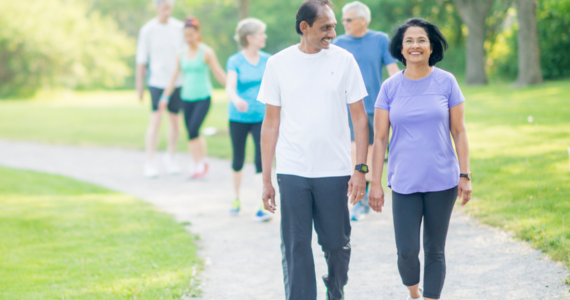Do you have a twelve-a-day habit? We’re talking seated hours, not cigarettes. Studies indicate that sitting too much and moving too little can be just as bad for your health.

The Victorian Government’s Better Health website suggests that sitting is the new smoking, and plenty of studies are backing up the claim. According to government stats, more than 60% of us do less than the recommended 30 minutes of daily exercise1.
But it’s not just structured exercise that we lack.
Not so long ago, office workers communicated by walking to colleagues’ desks. Information was shared by hand-delivered memos (remember those?), and we physically attended meetings.
We went outside to buy lunch and – horrors – may have even eaten it outside!
Today’s world is one of remote connectivity. People work from home, use email or instant messaging to communicate with colleagues, and attend meetings via videoconferencing.
As a population, we are moving less. We’re buying online where we used to visit shopping centres. We, who once walked or cycled to school, now drive our kids; and they spend hours texting friends online instead of physically meeting up with them.
Technology has aided and abetted us in becoming more sedentary than ever before – to the detriment of our health and wellbeing.
According to the United Kingdom’s National Health Service (NHS), excessive sitting is putting us at risk of all manner of diseases, the most common being obesity and Diabetes Type 22.
The NHS quotes sources from Melbourne’s Baker IDI Heart and Diabetes Institute as claiming that too much sitting slows metabolism. This, in turn, affects the body’s ability to regulate blood sugar, blood pressure and metabolise fat.
Other consequences may include conditions like varicose veins, sciatica, deep vein thrombosis (DVT) or more sinister ailments like heart disease and cancer.
So, if too much sitting is the problem, is standing the solution?
Well, yes and no.
Adjustable workstations enabling office workers to stand at their desks are a step in the right direction, but standing alone is not a panacea. Standing for hours can affect posture and lead to neck, back and hip problems.
Movement is the key. Fitting more movement into daily life isn’t as difficult as you might think.
Consider:
- Taking the stairs instead of the lift.
- Visiting colleagues’ desks.
- Pacing while on the phone.
- Setting an hourly timer reminding you to get up and walk.
- Walking with the kids to school.
- Organising walking meetings– it’s a thing, Google it!
Our bodies are designed for movement. Lack of movement weakens muscles and bones, and ultimately our health and mental well-being can suffer.
It’s like leaving a car idle in a garage for months. You can replace a car, but you can’t replace your body – technology hasn’t gone that far yet – so get up and move it!
The information contained in this article is general information only. It is not intended to be a recommendation, offer, advice or invitation to purchase, sell or otherwise deal in securities or other investments. Before making any decision in respect to a financial product, you should seek advice from an appropriately qualified professional. We believe that the information contained in this document is accurate. However, we are not specifically licensed to provide tax or legal advice and any information that may relate to you should be confirmed with your tax or legal adviser.
1 https://www.betterhealth.vic.gov.au/health/healthyliving/the-dangers-of-sitting
2 https://www.nhs.uk/live-well/exercise/why-sitting-too-much-is-bad-for-us/


